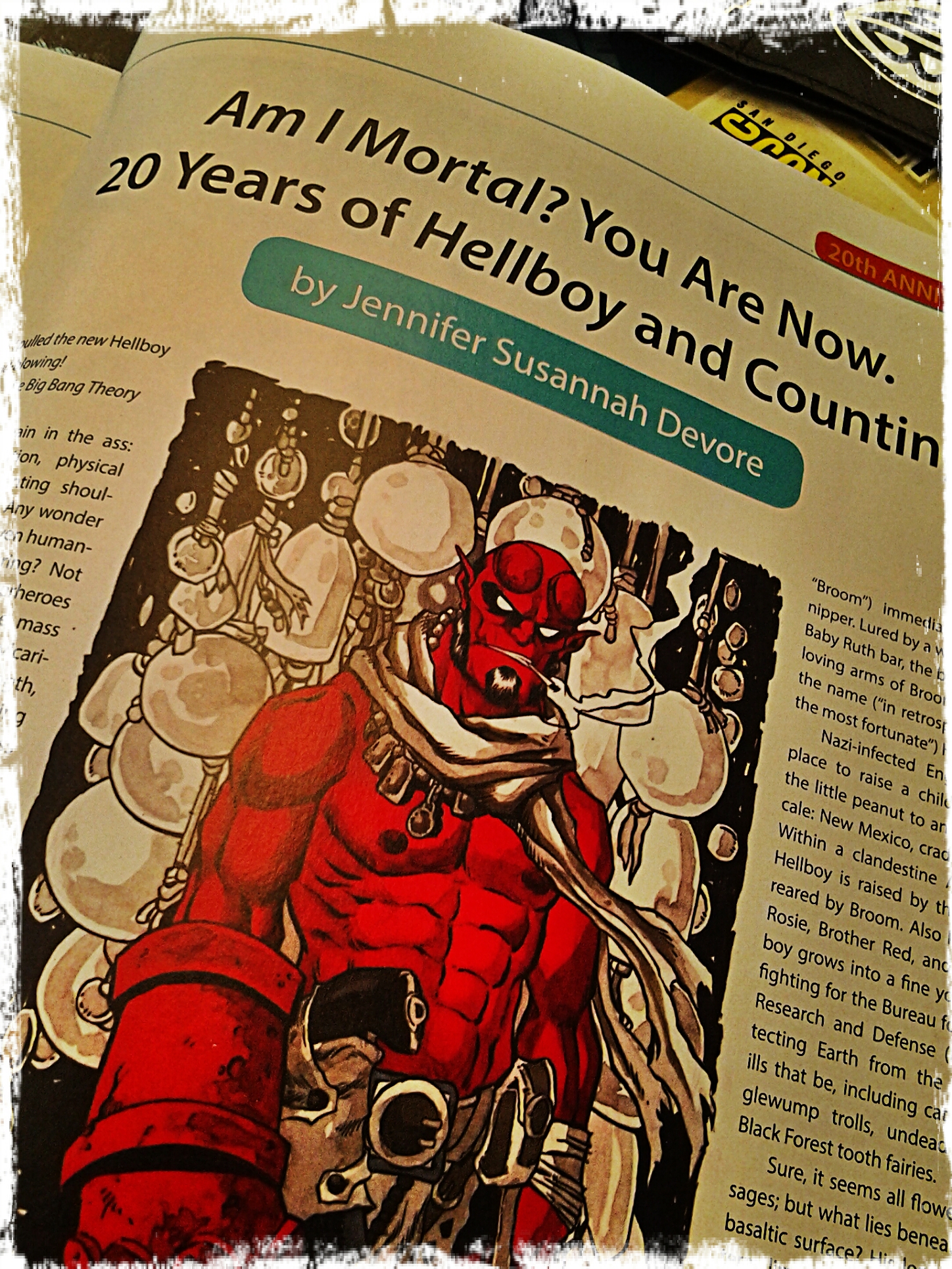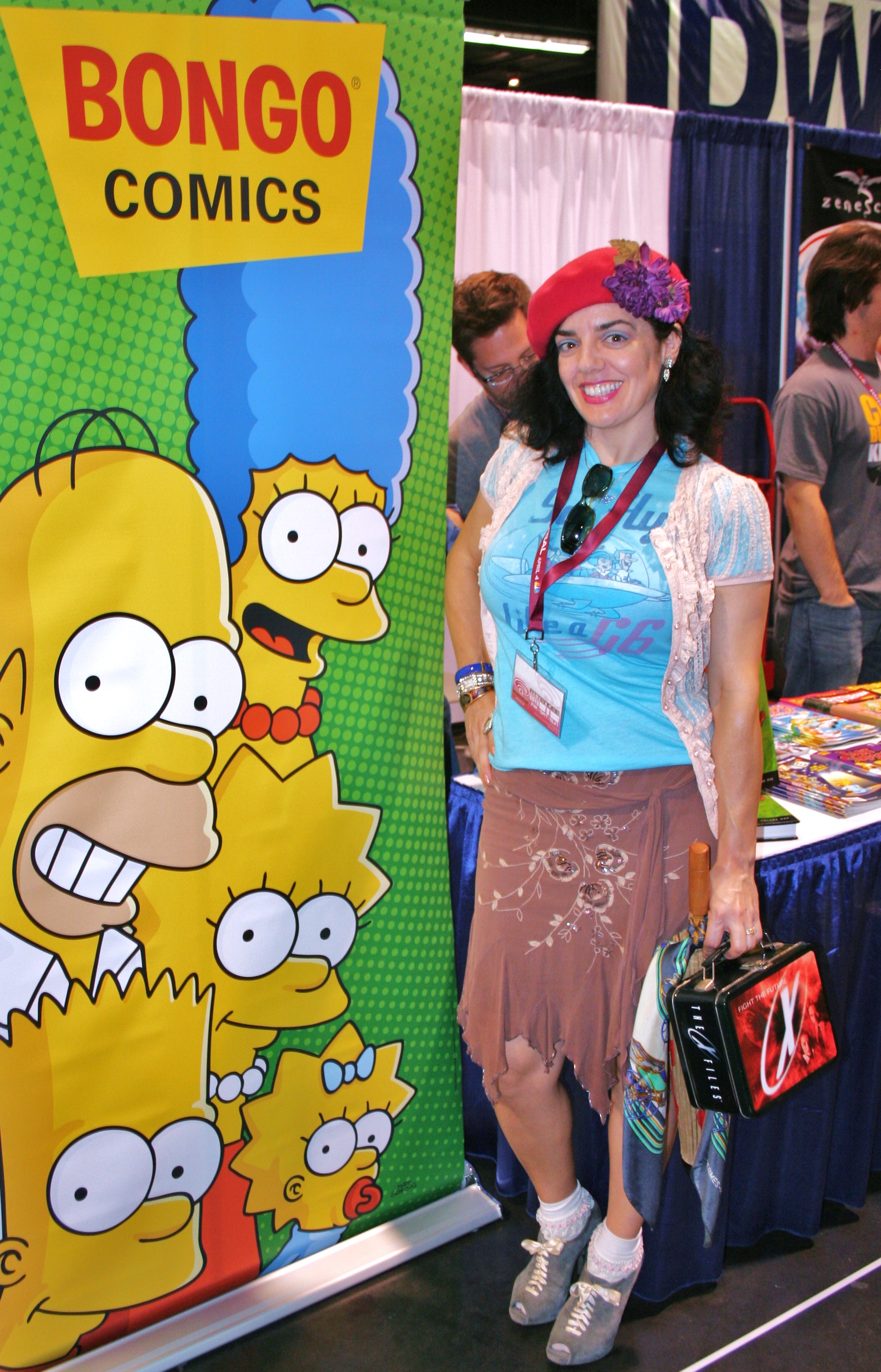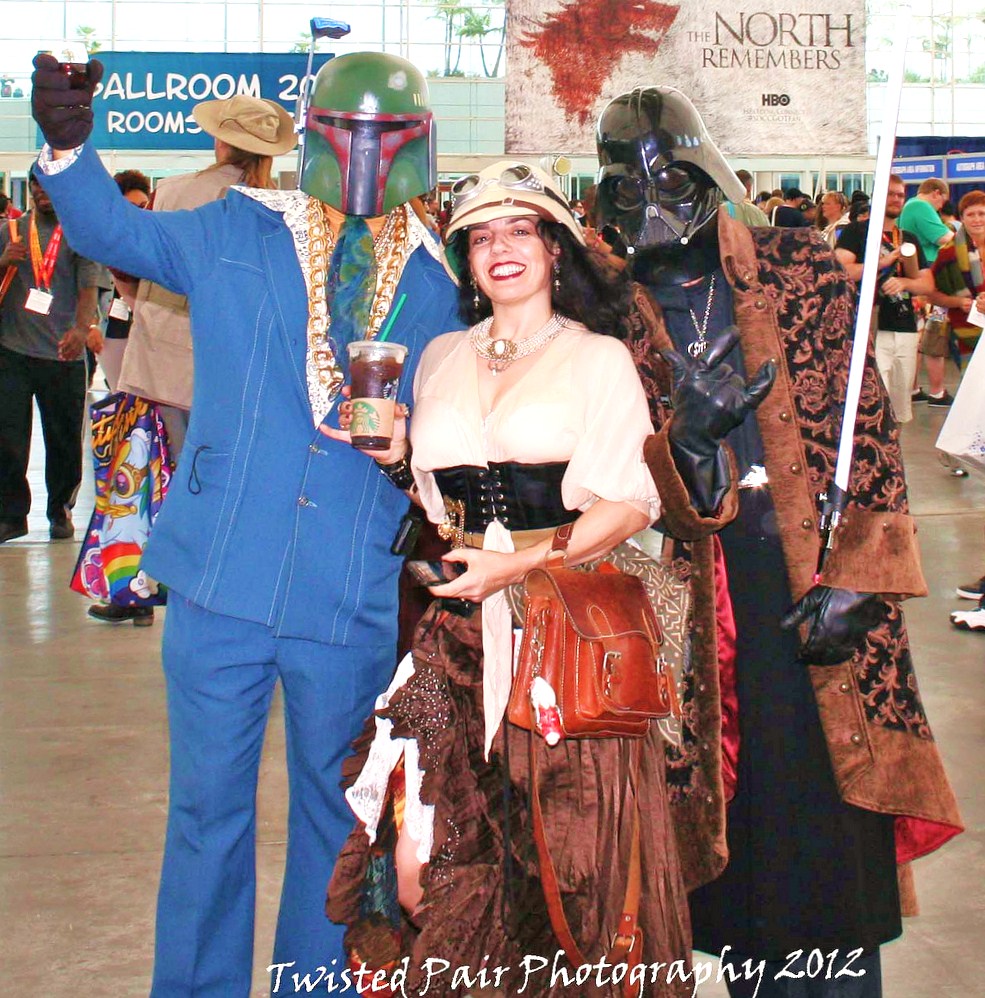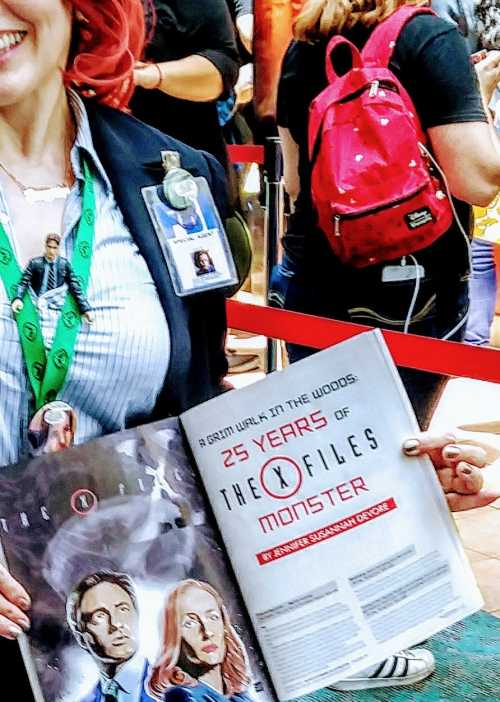"Are they really Muppets? Like, actually Muppets?" her purple-sparkle lids lowered to half-mast and her berry-frost lips twisted up-left as she tilted her head and twirled a long, Orange Crush-coloured curl, hesitating, requiring verbal authentication before further engagement.
"As real as they get," a bemused puppeteer nodded with a genial, albeit tired
"Are they really Muppets? Like, actually Muppets?" her purple-sparkle lids lowered to half-mast and her berry-frost lips twisted up-left as she tilted her head and twirled a long, Orange Crush-coloured curl, hesitating, requiring verbal authentication before further engagement.
“She called herself Bat-Girl! Gosh, I wonder who she is?”
- Robin, Batman #139, April 1961
Swooshing through an open window, Bat-Girl crashed the DC Comics clique in 1961. Resembling 1930s Norwegian, Olympic ice-skater Sonia Henie, she was more Madame Alexander doll than superhero. The first Bat-Girl, a.k.a. Betty Kane, was little more than a pretty, teenage nuisance and, according to Robin, “an inexperienced girl bound to get hurt pursuing crooks”.
On her Fiftieth, Batgirl, and we, might reflect on her personal transformations. Along her journey, she has refashioned not only her hair colour, costumes and careers, but her secret identities. Batgirl's personalities number so many, a PhD candidate might deconstruct her mythology as a dissertation on “Dissociative Identity Disorder in Pop-Culture”. However deconstructed, Batgirl's only constant is her utility belt.
75 Years of Archie Comics: Betty & Veronica, American Girls
by
Jennifer Susannah Devore
To me, Betty and Veronica symbolize something that is so right about America, where two girls from completely different backgrounds can find each other and become the best of friends.
-Johnathan Goldwater, co-founder/publisher Archie Comics
Veronica Lodge has everything endless wealth can provide: a mansion, cars, travel and a trendsetter's wardrobe. She also possesses qualities generally unaffected by means: beauty, intelligence, self-confidence and a supportive family. One wonders, why is she at public school, rather than private? Mother and Father Lodge must raise a privileged child, without letting loose on the world an entitled adult.
Mr. Lodge thinks that … Veronica is exposed to a more diverse group of students and is hopefully developing some lasting friendships.
-Victor Gorelick, Archie Comics Co-President/Editor-in-Chief
Betty Cooper has everything endless sweetness can provide: loyal friends, a true heart, a clear conscience and altruistic intentions. She also possesses qualities generally unaffected by means: beauty, intelligence, self-confidence and a supportive family.
Reform, Relapse and What She Wore: 75 Years of Catwoman Chic
by
Jennifer Susannah Devore
They say a little black dress is a timeless classic. We say a little patent-leather jumpsuit with a mask and a whip beats that.
-Suzan Colón, Catwoman: The Life and Times of a Feline Fatale
Simply because the night includes midnight Parkour and pilfering, doesn't mean a girl should look homeless, even if she is. Confident yet wary, the youngest Selina Kyle yet, of FOX's Gotham, sprightly portrayed by Camren Bicondova, has perfectly honed the hip, desperately-casual style of Millennial America (designed by Lisa Padovani): storm colours in leather and wool, jeans, hoodies and knee-boots. Although, oddly, like Star Wars, Gotham seems set in the future and a long, long time ago, thus explaining Selina's futuristic/vintage steampunk goggles and 1930s, Marion Davies curls. Bicondova's Selina is a magnetic addendum to Catwoman's bio; but she has years to grow into Batman's nemesis and the sartorial significance that transmutes Selina into Catwoman.
Spring 1940 (Batman #1) introduced us to the dishy ne'er-do-well known prosaically as The Cat. Boarding a yacht to pinch a diamond bauble, she wears no catsuit, only the unimaginative mask of an elderly woman. Yet, the rest of her? Long legs, tiny waist, form-fitting pencil-dress and bombilating blue-black locks. Clearly, more Old Hollywood glam than old lady scam.
We needed a female nemesis to give the strip sex appeal. So we came up with a kind of female Batman.
-Bob Kane, Catwoman co-creator (artist)
Soon, she was dubbed Catwoman and receives what any hot villainess requires: mask, cape, kick-ass boots and whip. Even so, costume uniformity came slowly.
Summer 1940 (Batman #2) saw Catwoman sporting dramatic, primary colours in the standard, pre-WWII silhouette of the day: fitted dress, shoulder pads, puffed sleeves, full skirt. Unfortunately, by autumn of that year she also started sporting furry, realistic cat masks. The Fifth Avenue dame with the cat head was just creepy.
Autumn 1940 (Batman #3), the gold and red ensembles transitioned to more mysterious, black numbers in leather with purple capes. On-target, but the fur masks lingered. Why obscure the pretty? Modeled partially on Hollywood bombshells like Jean Harlow and Marlene Dietrich, why give Catwoman the figure of Jane Russell and the élan of Lauren Bacall, but the face of Clark Gable?
As WWII raged, Catwoman shimmied out of her day dress and into a voluptuous violet frock with shoulder pads and a full skirt, great for twirling and swinging around Gotham rooftops. A Kelly-green cape and Robin Hood boots finished the glam-bandit look.
The fur mask was finally shed, too. Half-face with cat ears and wide eye-holes, the new mask highlighted her intense peepers, sharp cheekbones, ruby lips and waves of black curls in the Gotham moonlight. Kitty can still scratch, but now she doesn't have fleas.
And don't underestimate her, just because she's a woman!
-Robin, Boy Wonder
After WWII, Catwoman reëntered peacetime unscathed, sashaying easily into the well-manicured 1950s. Vacillating between prowler and proper citizen, she kept busy in a variety of "jobs": jewel thief, fashion editor, pet shop employee. Each gig meant new gear, which meant getting said-gear. The magazine gig was solely a ruse to misappropriate a mink coat.
The Fabulous Fifties presented Catwoman as a bored socialite with plenty of cabbage but a penchant for shoplifting. Until 1954, she reflected post-War America perfectly, save the kleptomania: swank, comfortable, blasé. She had an itch though, and Gotham nights provided the scratching post.
Whether slinking through Gotham at night in her mask and cape, or manning the pet shop by day in her silk and pearls, Catwoman remained a dashing yet ladylike knockout. Then, came the Sixties.
After a ten-year stretch under a sunny window, Catwoman returned to print comics in 1964, in a flurry of costume variations. 1967 (Batman #197) found her in a weird green, scaly bodysuit that looked like something she'd catch for dinner. About that same time, television had better designs on Catwoman. Thankfully, that included Julie Newmar.
Is it any wonder she gave him "curious stirrings in his Utility Belt"?
-Adam West, Batman (1966-1968), Batman
TV oft sets its own parameters. Sometimes that's good and brings new generations of fans. Batman (1966) lured a whole new fan base using little more than a black, Lurex bodysuit. Julie Newmar looked as though she'd been dipped in quicksilver: shiny, mesmerizing and deadly. Add a low-slung, gold belt, elbow-gloves with claws, and black kitty ears resting perkily atop wavy, golden-Titian hair and, "Hello, curious stirrings".
Newmar wasn't the only screen-Catwoman; surprisingly she appeared in only six Batman episodes. She was, however, the first. Like Windows 3.1, Newmar was America's first GUI Catwoman.
TV Catwomen of the Sixties numbered three: Newmar, Meriwether and Kitt. Though each brought her own twist to the role, each essentially wore the same thing: same cat-suit, same cat-ears, same cat-accessories (designed by Pat Barto). Though Eartha Kitt rose above the discussion of race, it cannot be denied three years after the Civil Rights Act of 1964, Catwoman was black.
Was it a racial victory? A black woman portraying a traditionally white character? I don't think of myself in terms of a race. I'm an artist.
-Eartha Kitt, Catwoman (1967-1968), Batman
Lee Meriwether, a kind of slinkier Laura Petrie in leather and revenge, claimed, "Eartha, for my money, was the best Catwoman." As far as Kitt's legendarily sexy purrr, Newmar admits, "I started it, but I'll tell you. Eartha Kitt did it better. My God, no one could top that!"
"Her Catwoman was sinuous and sexy and she exuded intelligence and craftiness from every pore," cooed Adam West of Ms. Kitt in 2003.
Since her creation in 1940, Catwoman's bio, and wardrobe, has changed multiple times: nine lives indeed. By the 1980s though, her backstory, and costuming, becomes darker and less forgiving: more panther, less sex kitten. Depending on the tale, she is an abused prostitute, or an abused socialite, no longer just bored, but victimized. Either way, she escapes her violator and hits the streets with her natural acumen leading the way. One twist finds her recycling old dominatrix work-gear into Catwoman threads. This pattern of finding opprobrious men, save Batman, eventually reduces all men to mere cat toys. The Catwomen and catsuits of the Eighties and Nineties, in print and film, exhibit this more volatile psychology: notably via auteur Tim Burton and actress Michelle Pfeiffer in Batman Returns (1992).
If Catwoman was polite and Stoic before, Pfeiffer pierces her with an enjoyable infusion of pure wackadoo. Pathetic cat-lady Selina Kyle spends too much time at the office and irritates the boss; so abusive boss Max Schreck fires her by defenestration. Remarkably, Selina rebounds uninjured, but totally bonkers. Being tossed out a window will do that to a girl. Naturally, she next fashions a latex catsuit (designed by Mary E. Vogt). Barely held together by crazy-stitches, much like her psyche, the suit proffers a new Catwoman with a bit of batty behind Pfeiffer's almond eyes and cherry lips.
More than a decade later, Halle Berry would continue the dark theme in Catwoman (2004). If Pfeiffer makes Newmar look like a daring secretary at the office Hallowe'en party, Berry makes Pfeiffer look like a rubberized version of Betty Rubble. More Sturgis than supervillain, Berry's leather bra, hipsters and whip (designed by Angus Strathie) left less to the imagination, but inspired comicverse debate and a controversial Catwoman Barbie. With some complaining Berry was more stripper than blackguard, the next Catwoman seemed less lethal and threatening, like a sorority girl in a cheap, devil costume.
Anne Hathaway brings the catsuit full-circle (designed by Lindy Hemming) in The Dark Knight Rises (2012), poured into head-to-toe leather, spiked boots and, reminiscent of Newmar, perky kitty ears atop long, shiny, brunette hair. Hathaway looks less lascivious libertine and more Comic-Con cutie. In the end, befitting her natural charms, Hathaway keeps Catwoman chancy, but returns a whit of the Catwoman you'd maybe take home to Mom and Dad … maybe.
February 2014, DCComics writer Genevieve Valentine changed the bio again, exposing Selina's bisexualality. Catwoman #39 sees her retired and the Calabrese crime-family chief. Obviously, her panache is also retired: pixie cut, sensible heels, black pantsuit. Where's her flair? Hiding across town, it seems. In the Gotham shadows lurks another, younger dish waiting to sluice into the old catsuit: Eiko Hasigawa, heiress bred into the rival, Yakuza crime-family.
Usurping her identity and costume, Eiko strives to use Catwoman's persona for good: scotching the Yakuza's ill-deeds, and spying on Selina. Too much spying can lead to obsession though, and after some discourse on identity theft Selina and Eiko kiss. Not surprising, really, given Selina's history. Batman never fully fit the bill and every other man she's known has been a complete bastard, except Alfred. Where this storyline goes? Only Valentine knows.
"Will they dramatically implode? I mean, it’s comics, it could happen. But it will be a relationship," writer Valentine tempts.
Was that for me, or the suit?
-Eiko to Selina, après-kiss
The suit, Eiko. It's always the suit.
Read all JennyPop's SDCC Souvenir Book articles here!
Follow @JennyPopCom Twitter and Insta
JennyPop's Amazon Author Page, to boot!
In case you didn't pick up a copy at San Diego Comic-Con, never made it to Comic-Con, or never intended on going, but love reading JennyPop's work ... voila! Reprinted from the official 2014 SDCC Souvenir Book. Enjoy!

Am I Mortal? You Are Now: 20 Years of Hellboy, and Counting
by
Jennifer Susannah Devore
Here, Sheldon. I pulled the new Hellboy for you. It's mind-blowing!
-Stuart Bloom, The Big Bang Theory
Being human is a pain in the ass: heart-shattering emotion, physical limitations, that unrelenting shoulder-tap called mortality. Any wonder the knell of immortality, even human-hybrid versions, is so alluring? Not simply a fantasy world of superheroes keeping it tight and right, the mass appeal is a micro-fantasy of vicarious athanasia, preternatural strength and invulnerability: forever swinging on that top branch. Sure, weakness abounds, even for the eternal: religious vestiges, beheadings, spells, Kryptonite, wooden stakes, domestic beer. Still, ruination-odds are worth the eternity-payoff. Conversely, what a quandary it is when immortals bemoan their gifts, even forfeiting them to join the Muggle world. Who knew pancakes, cigars and television were so bewitching?
So, for those whom did not make it to San Diego Comic-Con this year, or did and unwisely tossed your official Souvenir Guide, my odd wordsmithing made it into the book once again! This year's is a favourite thus far: article and Souvenir Guide in toto.
Sandman, the cover art commemorating twenty-five years of Neil Gaiman's Gothic oeuvre, has hit my radar anew, having not read it since the glorious, gloomy, gringy Nineties. After reading the Sandman articles and delighting in the accompanying gorgeous and ghoulish artwork, The Annotated Sandman has made my very particular birthday and Christmas lists: as there are multiple volumes, it is worthy of both.
For now, enjoy a posting here of Bartbarians at the Gate: 20 Years of Bongo on the Digital Frontier.

Bartbarians at the Gate: 20 Years of Bongo on the Digital Frontier
By Jennifer Susannah Devore
‘Cause he’s an old [comic junkie] and he don’t know what to do.
Should he hang on to the old, should he grab on to the new?
He’s an old [comic junkie], this new life is just a bust.
He ain't trying to change nobody, he's just trying real hard to adjust.
-David Bellamy
November spawned an empire. Like an impatient, petulant newborn, Bongo Entertainment spewed forth, squealing and sliding into our arms like a greased up Spiderpig. Present in the room for the birth were Radioactive Man, Bart Simpson, Itchy & Scratchy and, naturally, The Simpsons. Waiting in the hallway, anxious friends and family would queue up for years to administer the requisite welcome-slap on the bum: Bender, Comic Book Guy, Leela, Professor Frink, Ralph Wiggum, Fry, Li’l Homer, Zoidberg, Maggie, Poochie, Mr. Burns, Akbar & Jeff, all the denizens of Treehouse of Horror and dozens more.
“Welcome to the world of print comics, you magnificent bastard!” the masses cried outside the gates. “It’s about time!”
So, it really is the little things. Of course, being cited by TIME magazine isn't exactly "little", my pretties! Charlie Brown, it appears, is making a ... no, TIME Entertainment journalist Graeme  McMillan says don't call it a comeback. Charlie Brown is having a great revival and, apparently, the Peanuts tribute I scribed for the 2010 San Diego Comic-Con Souvenir Book, First Beagle on the Moon, made the grade as "Peanuts source material". Ah, being a dork pays off, it seems.
McMillan says don't call it a comeback. Charlie Brown is having a great revival and, apparently, the Peanuts tribute I scribed for the 2010 San Diego Comic-Con Souvenir Book, First Beagle on the Moon, made the grade as "Peanuts source material". Ah, being a dork pays off, it seems.
Please, feel free to enjoy JennyPop's commemoration of Peanuts' 60th anniversary: "First Beagle on the Moon".
Read all my SDCC Souvenir Book articles here!
Follow @JennyPopCom Twitter and Insta
JennyPop's Amazon Author Page, to boot!
For all you poor mooks whom did not make it to San Diego Comic-Con 2012, or did and possibly lost, tossed or neglected your coveted Official Souvenir Book, unaware of the gems contained therein, I feel sad that you missed out on my Tarzan article. You should feel bad; it was good enough to garner me a personal invitation to meet the one, the only Dr. Jane Goodall! Where? A banquet in Tarzana, of course! (Long-time readers might recall my Disney methods used to inspire the finished product.) Well, no worries, jelly beans! There’s still time to mend your silly ways. Swing on over to my tree, grab a Sailor Jerry Banana Hammock and read my article here!
Cheers, babies! It's me, Miss Hannah Hart, ghostdame of the Hotel del Coronado and it's June! You know what that means? Summer is mere days away and San Diego Comic-Con 2012 is a mere month away!

No one is more excited than Yours Truly ... well, okay. I imagine there are some nibbling their fingernails a tad more than I. After all, part of the appeal of our Comic-Con is that it's in glorious San Diego. I get to live here year round, kids, haunting my dilly of a Hotel Del. If you're zinging your way here for the Con and it's your first time in San Diego, we welcome you, one and all! Need some priceless, insider tips on all the SDCC how-tos? Check the SDCC Expert for Baby's First Comic-Con.



